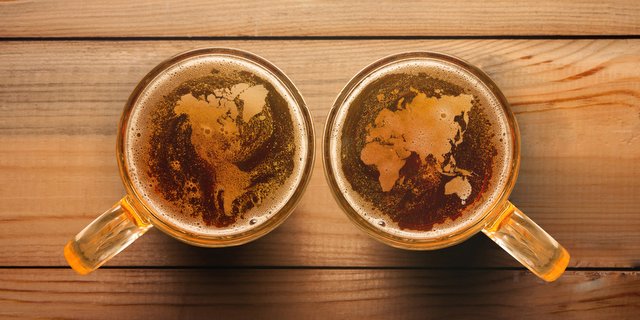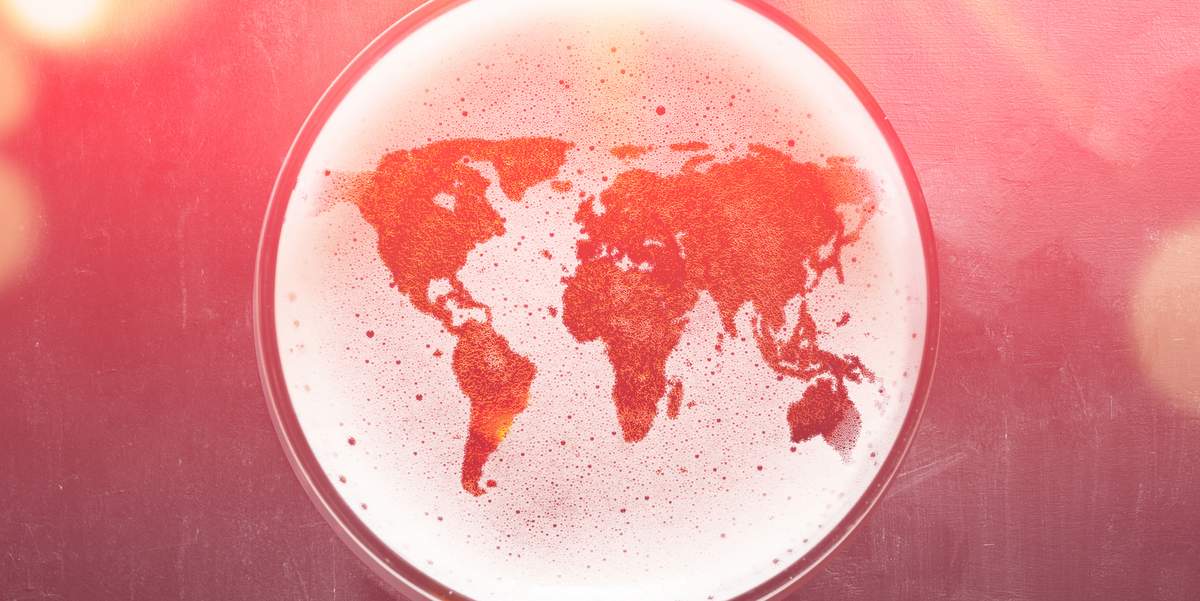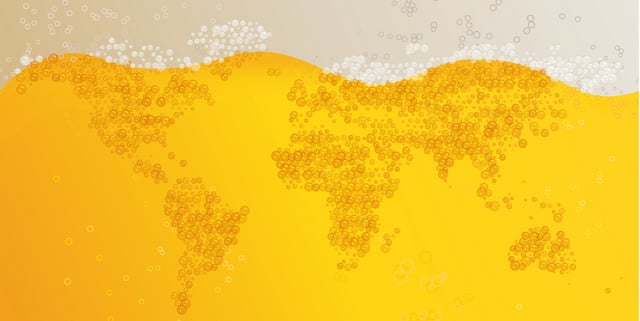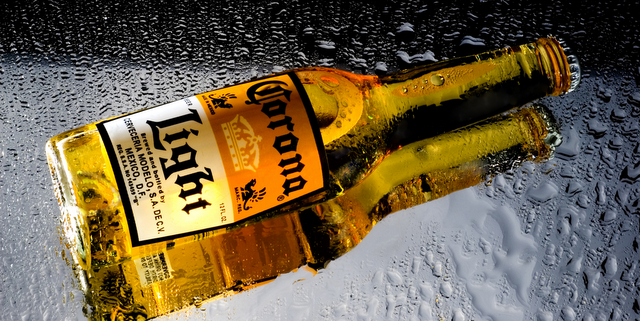
Over the last 40 years, IWSR has built up the world’s largest database on the beverage alcohol market. It claims to understand the market, category and brand performances of products in 157 countries across the world using local market input. Occasionally, IWSR releases market reports, and occasionally we run those market reports because we find them interesting and insightful. Here’s one right now!
Beverage alcohol drinkers across the globe consumed a total of 27.6 billion nine-liter cases of alcohol in 2018, but while that number represents a decrease of -1.6 percent from the year prior, new data from the IWSR forecasts that total alcohol consumption will steadily increase over the next five years, to 28.5 billion cases in 2023.
In terms of retail value, the global market for beverage alcohol in 2018 was just over $1 trillion, a number which the IWSR expects to grow 7 percent by 2023 as consumers continue to trade up to higher-quality products. These figures — and more than 1.5 million other points of data — are included in the just-released IWSR Drinks Market Analysis Global Database, which also shows:
Beer continued to lose volume in 2018 but is expected to rebound
Global beer declined -2.2 percent in 2018, impacted greatly from volume decreases in China (-13 percent). Other large markets such as the United States and Brazil also fell (-1.6 and -2.3 percent, respectively), while Mexico and Germany saw growth (6.6 and 1 percent, respectively). The future outlook for beer, however, paints a more positive picture, as the category is expected to show a slight increase in 2019 and post a 0.7 percent CAGR 2018-2023.
Gin was the leading global growth category in 2018, forecasted to reach 88m cases by 2023
The largest gain in global beverage alcohol consumption in 2018 was in the gin category, which posted total growth of 8.3 percent versus 2017. Pink gin was a key growth driver, helping the category sell more than 72 million nine-liter cases globally last year. In the UK alone, gin was up 32.5 percent in 2018, and the Philippines (the world’s largest gin market) posted growth of 8 percent, fueled by a booming cocktail scene and premiumization of the market. By 2023, the gin category is expected to reach 88.4 million cases globally, with particular strong growth in key markets such as the UK, Philippines, South Africa, Brazil, Uganda, Germany, Australia, Italy, Canada and France. Notably, Brazil has emerged as a new hotspot for the category, with volumes there more than doubling last year and forecasted to grow at 27.5 percent CAGR 2018-2023, as the gin-and-tonic trend has increased in upmarket bars of São Paulo and Rio de Janeiro.
Consumption of whisky and agave-based spirits continues to increase
Spurred by innovation in whisky cocktails and highballs, the global whisky category increased by 7 percent last year, driven in large part by a strong Indian economy (whisky grew by 10.5 percent in India, as consumers continue to trade up in the category). The United States and Japan posted 5 and 8 percent growth, respectively. The IWSR forecasts whisky to grow by 5.7 percent CAGR from 2018 to 2023, to almost 581 million nine-liter cases. Also, continued interest in tequila and mezcal (especially in the United States), and innovation in more premium variants and cocktails, drove the agave-based spirits category to 5.5 percent global growth in 2018 — and is expected to post 4 percent growth over the next five years (2018-2023 CAGR).
Mixed drinks and cider grow
The mixed drinks category (which includes premixed cocktails, long drinks, and flavoured alcoholic beverages) grew 5 percent globally in 2018. By 2023, it is projected that more than 597 million nine-liter cases of mixed drinks will be consumed across the world. The growth is backed by continued strong gains in ready-to-drink (RTD) cans in the United States and Japan, the category’s two largest markets. In Japan, most RTDs are locally made and almost exclusive to Japan. Their popularity is partly due to the fact that they are relatively dry, which makes them more food friendly and sessionable. In the United States, the popularity of alcohol seltzers has been a tremendous engine for growth in the RTD market. In the cider category, as investment levels in those products continue to rise, almost 270m cases are expected by 2023, a 2 percent CAGR 2018-2023. Both of those categories (mixed drinks and cider) are taking share from beer as perceived accessibility increases (less bitter, easier to drink.)
Vodka, liqueurs, and cane spirits are in decline
Vodka lost volume in 2018 (-2.6 percent) as the market for lower-priced brands continued its decline in Russia and the Ukraine (two of the largest markets for this spirit). Higher-priced vodkas, however, showed a more positive trend last year. Nonetheless, the outlook for total vodka over the next five years remains sluggish as the category is forecasted at -1.7 percent CAGR 2018-2023. Also in decline is the flavored spirits category (liqueurs), which dropped by -1.5 percent globally in 2018, and is expected to continue to slip in 2019 before rebounding slightly in 2020. Cane spirits (primarily Brazilian cachaça) was down -1.6 percent last year, and is forecasted to lose another 4.5 million cases by 2023.
Wine volume declines, but value increases
Wine, which had posted strong global growth in 2017, lost -1.6 percent in volume in 2018 as wine consumption declined in major markets such as China, Italy, France, Germany and Spain (the U.S. market was flat). However, though consumers are drinking less wine, they’re increasingly drinking better — pushing wine value to increase.
Globally, the retail value of wine is projected at $224.5 billion by 2023, up from $215.8 billion in 2018. The one bright spot in wine volume is the sparkling wine category, which is expected to show a five-year CAGR of 1.17 percent 2018-2023, driven in large part by prosecco.
Low- and no-alcohol products on the rise
Low- and no-alcohol brands are showing significant growth in key markets as consumers increasingly seek better-for-you products, and explore ways to reduce their alcohol intake. Growth of no-alcohol beer is expected at 8.8 percent and low-alcohol beer at 2.8 percent. No-alcohol still wine is forecasted at 13.5 percent, and low-alcohol still wine at 5.6 percent. Growth of no-alcohol mixed drinks is predicted at 8.6 percent. (Above figures are all CAGR 2018-2023.)
“Every year our analysts spend months traveling the world to speak with suppliers, wholesalers, retailers, and other beverage alcohol professionals to assess what is happening market by market in this fast-changing business,” said Mark Meek, the IWSR’s CEO. “The raw data we collect is enormously valuable, but equally important is what that data tells us in terms of trends, challenges, and opportunities facing the industry.”





Mike Haack says
Question: What % +/- directly relates to the craft beer sector?
Dave Cleland says
we’re trying to make up for everyone else here in Colorado